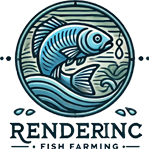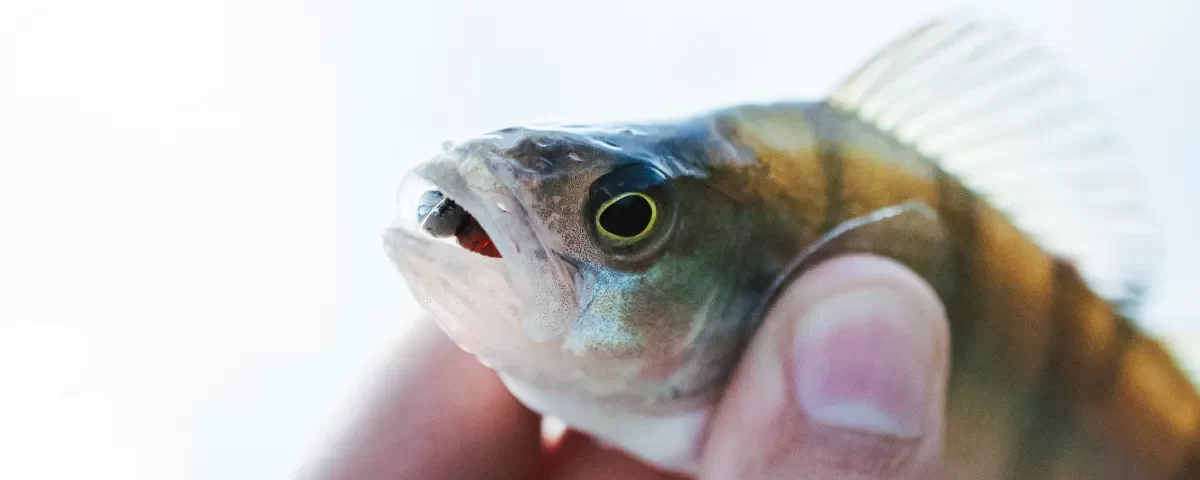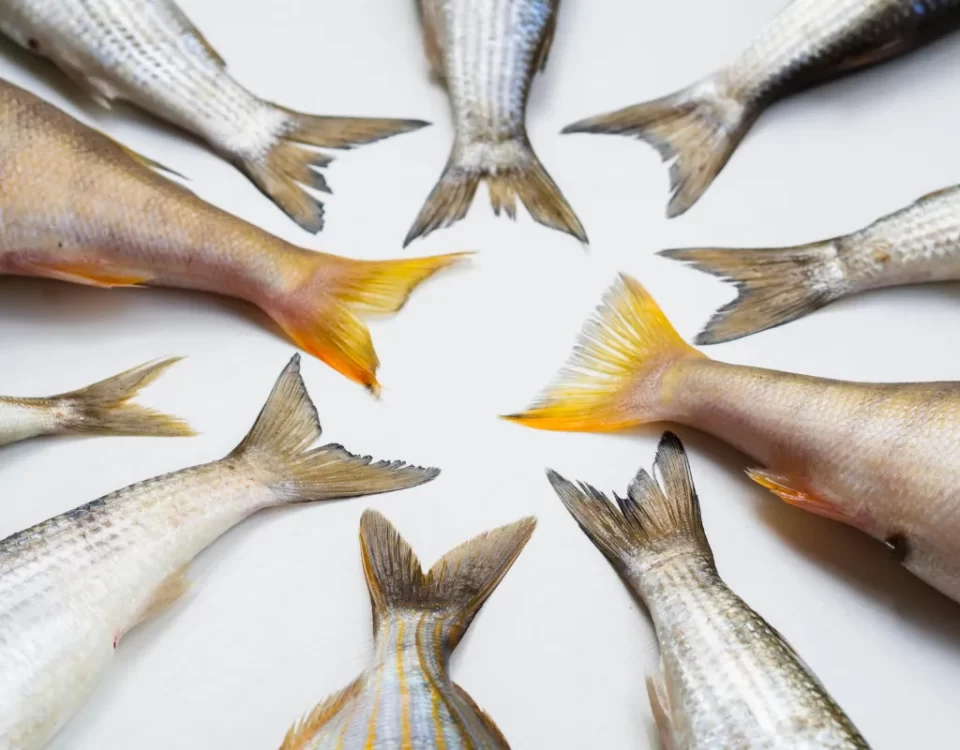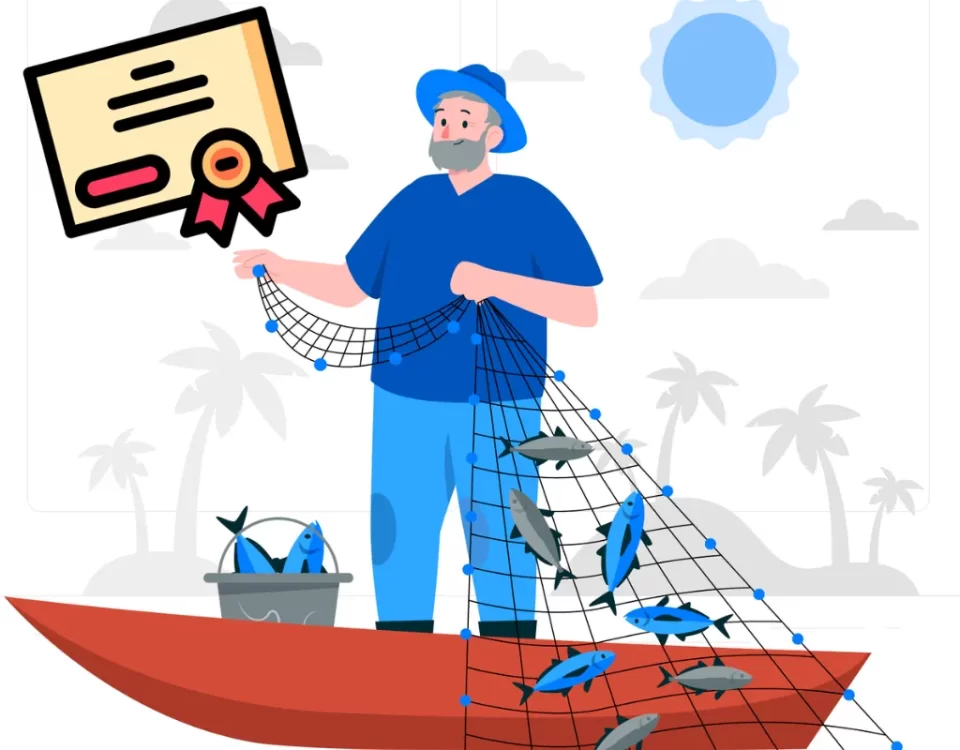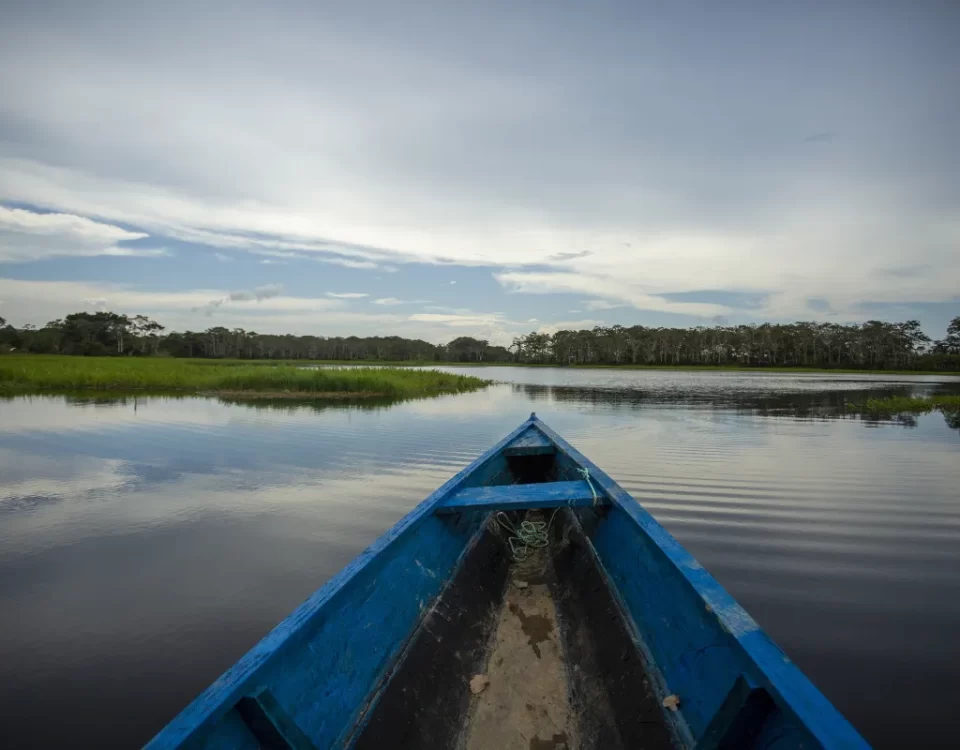The Future of Sustainable Fish Farming: Trends and Innovations

Essential Equipment for Effective Aquaculture Systems
setembro 2, 2024
Sustainable Fish Farming: Reducing Environmental Impact
setembro 5, 2024Advancements in Aquaculture Technology
Advancements in aquaculture technology have revolutionized the way fish farming is conducted, paving the way for a more sustainable and efficient industry. One of the key trends in this sector is the introduction of high-tech systems for monitoring water quality. These systems utilize sensors and real-time data analysis to monitor parameters such as dissolved oxygen levels, temperature, and pH, ensuring optimal conditions for fish growth. By maintaining ideal water quality, farmers can mitigate the risk of disease outbreaks and improve the overall health and productivity of their fish stocks.
High-Tech Water Quality Monitoring Systems
The integration of high-tech water quality monitoring systems in fish farms allows for precise and continuous monitoring of crucial parameters. Advances in sensor technology have enabled farmers to remotely track water quality metrics and receive alerts in case of any deviations from the desired levels. This level of monitoring and control not only enhances fish welfare but also contributes to resource optimization and environmental sustainability.
Utilization of IoT and AI in Fish Farming
Another significant advancement in aquaculture technology is the utilization of Internet of Things (IoT) and Artificial Intelligence (AI). IoT devices are being used to collect and transmit data from various points within the farm, enabling farmers to make informed decisions based on real-time insights. AI algorithms analyze this data to predict trends, optimize feeding schedules, and even detect early signs of disease outbreaks. This sophisticated integration of technology not only streamlines operations but also enhances efficiency and productivity in fish farming.
Benefits of Automation in Feeding and Harvesting Processes
Automation has brought about a paradigm shift in fish farming by enhancing efficiency and reducing labor costs. In terms of feeding, automated systems can dispense accurate and portion-controlled feed at optimal intervals, promoting healthy growth and reducing waste. Automated harvesting processes, on the other hand, ensure precision and speed in collecting fish at the right maturity stage. By minimizing human error and maximizing efficiency, automation not only increases yield but also improves the overall sustainability of fish farming operations.
The future of sustainable fish farming lies in embracing cutting-edge technology and innovative solutions to address the challenges faced by the industry. Advancements in aquaculture technology, such as high-tech water quality monitoring systems, IoT, AI integration, and automation, are shaping a more efficient, productive, and environmentally conscious approach to fish farming. By staying at the forefront of technological developments, fish farmers can pave the way for a brighter and more sustainable future for aquaculture.
Vertical Integration in Fish Farming
Explanation of Vertical Integration Concept in Aquaculture
Vertical integration in the realm of aquaculture refers to a system where a single company oversees multiple stages of the production process, from hatcheries to processing and distribution. By controlling various aspects of the supply chain, companies aim to streamline operations, improve efficiency, and ensure quality standards are met at each stage. This integrated approach creates a cohesive network that allows for better oversight and management of the entire fish farming process.
In the context of fish farming, vertical integration can involve everything from owning and operating hatcheries that produce fish juveniles to managing grow-out facilities and processing plants. This comprehensive control over the production chain enables companies to closely monitor and optimize each stage for maximum efficiency and quality. Through vertical integration, aquaculture businesses can reduce reliance on external suppliers and have greater control over factors like feed quality, disease management, and sustainability practices.
Advantages of Vertical Integration for Sustainability and Efficiency
The adoption of vertical integration in fish farming offers numerous advantages, particularly in terms of sustainability and efficiency. By overseeing the entire production process, companies can implement sustainable practices more effectively, such as controlling feed sources, managing waste, and reducing environmental impacts. This holistic approach allows for better resource management and minimizes the ecological footprint of fish farming operations.
Moreover, vertical integration enhances efficiency by streamlining processes and eliminating potential bottlenecks in the supply chain. With closer coordination between different stages of production, companies can optimize workflows, reduce transportation costs, and improve overall productivity. This integrated approach also enhances quality control measures, ensuring that fish products meet stringent standards from hatchery to market.
Case Studies of Successful Vertical Integration in Fish Farming Companies
Several fish farming companies have successfully implemented vertical integration strategies to drive sustainability and efficiency in their operations. One notable example is Company A, which vertically integrates its aquaculture business by managing its own hatcheries, grow-out facilities, and processing plants. This integrated model allows Company A to closely monitor product quality, enhance traceability, and ensure sustainable practices are adhered to at every stage of production.
Another case study is Company B, known for its innovative approach to vertical integration in fish farming. By controlling the entire supply chain, from breeding and feeding to processing and distribution, Company B has achieved significant cost savings, improved production efficiency, and enhanced product differentiation. This comprehensive integration strategy has positioned Company B as a leader in sustainable aquaculture practices and garnered acclaim for its commitment to quality and environmental stewardship.
Sustainable Feed Solutions
In the realm of sustainable fish farming, the significance of utilizing sustainable feed cannot be overstated. The feed used in aquaculture plays a critical role not only in the growth and health of the fish but also in the overall environmental impact of the industry. Sustainable feed options prioritize the responsible sourcing of ingredients and the reduction of waste and pollution, aligning with the ethos of environmental stewardship that is becoming increasingly imperative in today’s world.
When exploring innovative feed ingredients and formulations to diminish the environmental footprint of fish farming, a plethora of exciting possibilities emerge. These range from incorporating byproducts of other industries, such as agricultural leftovers or food waste, to developing feeds that require fewer resources like water and energy during production. Precision nutrition approaches are also gaining traction, tailoring feed compositions to the specific needs of different fish species at various growth stages, optimizing their health and minimizing excess nutrient discharge into the surrounding ecosystem.
Within the realm of alternative feed sources, the rise of algae-based feeds stands out as a promising avenue in sustainable fish farming. Algae offer a rich source of essential nutrients for fish, such as omega-3 fatty acids, without relying on the finite resources of wild-caught fish. Moreover, algae cultivation can help mitigate nutrient pollution in aquatic environments by acting as natural filters. On the other hand, the utilization of insect-based feed presents another intriguing frontier. Insects are highly efficient converters of feed into body mass and contain valuable proteins and fats that can meet the nutritional requirements of fish, all while significantly reducing the environmental impact associated with traditional feed sources. Innovations in insect farming techniques and feed formulations are driving this trend towards greater sustainability in aquaculture.
Aquaponics and Integrated Farming Systems
Aquaponics is an innovative sustainable farming technique that combines aquaculture (fish farming) with hydroponics (soil-less crop production). In this integrated system, fish waste provides essential nutrients to plants, while the plants naturally filter and purify the water for the fish. This symbiotic relationship creates a closed-loop ecosystem that maximizes resource efficiency and minimizes waste, making it an environmentally friendly and efficient method of food production.
One of the key benefits of aquaponics is its ability to conserve water. Traditional agriculture can be water-intensive, but aquaponics recirculates and reuses water within the system, reducing water consumption by up to 90% compared to conventional farming methods. Additionally, since the fish waste serves as a natural fertilizer for the plants, there is no need for synthetic chemicals or pesticides, making aquaponics a organic and sustainable farming practice.
In terms of integrated farming systems, there are exciting examples of combining fish farming with crop production to create synergistic agricultural models. For instance, some farms integrate aquaculture ponds with rice paddies, where fish waste fertilizes the rice plants, and the rice field serves as a natural filter for the pond water. This integration not only maximizes land use but also enhances the overall productivity and nutrient cycling of the system.
The potential for scalability and sustainability in aquaponics is vast. Unlike traditional farming, which can be limited by land availability and environmental constraints, aquaponics can be implemented in various settings, including urban environments, rooftops, and indoor facilities. This versatility allows for year-round production and minimizes the impact of external factors such as climate change and soil degradation, making aquaponics a resilient and future-proof solution for sustainable food production.
Genetic Improvement in Aquaculture
In the realm of aquaculture, the role of genetic improvement has emerged as a pivotal force in shaping the future of sustainable fish farming. Through the strategic application of selective breeding and cutting-edge genetic technologies, fish farmers have unlocked a realm of possibilities in enhancing the performance and resilience of their aquatic livestock.
Overview of Selective Breeding and Genetic Technologies in Fish Farming
Selective breeding has been a longstanding practice in agriculture, where desirable traits are intentionally promoted through controlled mating. In the context of fish farming, this technique has been refined and adapted to suit the unique biological characteristics of various fish species. Moreover, recent advancements in genetic technologies, such as genomic selection and marker-assisted breeding, have revolutionized the precision and efficiency of trait selection in aquaculture.
Benefits of Genetic Improvement for Growth Rates and Disease Resistance
The application of genetic improvement in aquaculture has shown remarkable results in enhancing key performance indicators of farmed fish, notably growth rates and disease resistance. By selectively breeding fish with superior growth potential and natural disease resistance, farmers can now achieve higher yields and healthier stocks. This not only translates to increased profitability but also contributes to the sustainability of fish farming by reducing the reliance on antibiotics and other chemicals.
Ethical Considerations and Potential Challenges in Genetic Enhancement
While the promise of genetic improvement in aquaculture is undeniable, it is crucial to acknowledge the ethical considerations and potential challenges associated with manipulating the genetic makeup of fish populations. Questions pertaining to animal welfare, genetic diversity, and ecological impacts warrant thoughtful reflection and careful deliberation. Moreover, the long-term effects of introducing genetically modified fish into natural ecosystems raise important concerns that must be addressed with prudence and transparency.
As the pursuit of sustainable fish farming continues to evolve, the responsible application of genetic improvement holds the promise of advancing the efficiency, productivity, and resilience of aquaculture systems. By navigating the complexities of genetic enhancement with conscientious stewardship and scientific rigor, the future of fish farming may indeed be shaped by innovation that harmonizes with the principles of sustainability and ethical integrity.
Sustainable Practices in Fish Health Management
In the realm of sustainable fish farming, maintaining optimal fish health is crucial for the success and longevity of aquaculture operations. The importance of disease prevention and treatment cannot be overstated in the context of sustainable practices. Disease outbreaks not only result in significant economic losses but also have detrimental effects on the environment and wild fish populations.
To uphold sustainable principles, fish farmers are increasingly turning towards eco-friendly approaches in disease management. Utilizing probiotics to enhance the immune system of fish and reduce the prevalence of pathogenic bacteria is gaining traction in the industry. Furthermore, the development and deployment of vaccines tailored to specific fish species and diseases are proving to be effective in preventing and controlling infections without relying heavily on antibiotics or chemical treatments.
Implementing biosecurity measures is a key component of sustainable fish health management. By establishing proper protocols for quarantine, hygiene, and segregation of fish populations, farmers can significantly reduce the risk of disease outbreaks. Furthermore, monitoring and testing for pathogens regularly can aid in early detection and prompt intervention, ultimately minimizing the spread of diseases within aquaculture facilities.
In essence, embracing sustainable practices in fish health management not only fosters the well-being of farmed fish but also upholds the integrity of the surrounding ecosystems. By prioritizing disease prevention, adopting eco-friendly approaches to disease control, and implementing robust biosecurity measures, fish farmers can pave the way for a future where aquaculture thrives in harmony with nature.
Market Trends and Consumer Demand
Growing Interest in Sustainable and Eco-Friendly Seafood Products
In today’s increasingly environmentally conscious world, there has been a notable surge in interest toward sustainable and eco-friendly seafood products. Consumers are becoming more ethically minded and are seeking products that are not only nutritious but also produced in a way that minimizes harm to the environment. This shift in consumer values has pushed the fish farming industry to reevaluate its practices and embrace more sustainable methods. As a result, there has been a growing demand for seafood products that are sourced from farms committed to reducing their environmental footprint.
Impact of Consumer Preferences on the Fish Farming Industry
Consumer preferences play a crucial role in shaping the future of the fish farming industry. As more individuals become aware of the importance of sustainability, their purchasing decisions are increasingly influenced by factors such as the farming methods used, the origin of the seafood, and the overall environmental impact. Fish farmers are now under pressure to adopt innovative and sustainable practices to meet the demands of this new breed of conscious consumers. Those who fail to adapt may find themselves at a considerable disadvantage in a market where sustainability is no longer just a buzzword but a defining factor.
Market Opportunities for Sustainable Fish Farming Practices
The rise in consumer interest in sustainable seafood presents a wealth of market opportunities for fish farmers who are willing to embrace innovation and eco-friendly practices. By focusing on sustainability, farmers can not only meet the demands of an ethically conscious consumer base but also gain a competitive edge in the market. Retailers and restaurants are increasingly seeking out seafood products that are produced sustainably, creating a niche market for fish farms that prioritize environmental stewardship. Embracing sustainable fish farming practices not only benefits the environment but also opens up new avenues for growth and profitability in an evolving industry landscape.
In conclusion, the growing interest in sustainable and eco-friendly seafood products is driving significant changes in the fish farming industry. Consumer preferences are shaping the market, creating opportunities for fish farmers to differentiate themselves by adopting innovative and environmentally responsible practices. As the focus on sustainability continues to gain momentum, the future of fish farming lies in meeting the demands of a conscientious consumer base while also reaping the benefits of a market that values ethical and eco-friendly seafood options.
Government Policies and Regulations
Government policies and regulations play a pivotal role in shaping the future of sustainable fish farming. By setting clear guidelines and standards, governments can incentivize the industry to embrace more environmentally friendly and ethical practices. Regulations can cover a wide range of aspects, from water quality management to feed composition and waste disposal. Through these measures, authorities can ensure that fish farms operate in a manner that minimizes their impact on the surrounding ecosystem.
Role of government regulations in promoting sustainable aquaculture
Government regulations are essential for promoting sustainable aquaculture by establishing and enforcing best practices. By implementing strict guidelines regarding stocking densities, water quality monitoring, and disease management, regulators can ensure that fish farms operate in a manner that is both environmentally sound and economically viable. Additionally, regulations can address issues such as the sourcing of fish feed, ensuring that farms use sustainable and ethical sources.
International agreements and standards for responsible fish farming
International agreements and standards play a crucial role in harmonizing practices across borders. Organizations such as the Food and Agriculture Organization of the United Nations (FAO) work towards developing global guidelines for responsible fish farming. These agreements help create a level playing field for producers worldwide, ensuring that all players adhere to similar standards in areas such as stocking densities, antibiotic use, and waste management.
Policy incentives for adopting sustainable practices in the industry
Governments can further encourage the adoption of sustainable practices in the fish farming industry by offering policy incentives. This can include financial support for farms that implement eco-friendly technologies, tax breaks for businesses that meet certain sustainability criteria, or subsidies for transitioning to more sustainable feed sources. By providing these incentives, authorities can accelerate the industry’s shift towards more environmentally conscious practices, creating a win-win situation for both producers and the environment.
Challenges and Future Outlook
Potential obstacles to the widespread adoption of sustainable fish farming
As sustainable fish farming gains momentum in the aquaculture industry, several potential obstacles threaten to impede its widespread adoption. One major challenge is the high initial investment required to transition from conventional methods to more sustainable practices. Small-scale farmers, in particular, may face financial barriers in implementing the necessary technologies and infrastructure needed for sustainable fish farming. Additionally, the lack of awareness and education among consumers about the benefits of sustainable seafood products could limit the demand for such products, further hindering the growth of the industry.
Strategies for overcoming challenges and driving change in the industry
To overcome these obstacles and drive change in the fish farming industry towards sustainability, innovative strategies are essential. Collaboration among stakeholders including government, industry, research institutions, and NGOs can promote knowledge sharing and research advancements in sustainable aquaculture practices. Incentive programs and subsidies that support farmers in transitioning to sustainable methods can help alleviate the financial burden. Moreover, consumer education campaigns emphasizing the environmental and health benefits of sustainable seafood can stimulate demand and create a market for eco-friendly products, incentivizing producers to adopt sustainable practices.
Long-term outlook for the future of sustainable fish farming
Looking ahead, the future of sustainable fish farming appears promising, with ongoing innovations and technological advancements driving the industry towards greater environmental and economic sustainability. As research continues to uncover more efficient feeding and waste management techniques, aquaculture operations are becoming increasingly resource-efficient and environmentally friendly. With a growing global demand for seafood and a heightened awareness of environmental issues, the shift towards sustainable fish farming is not only necessary but also inevitable for the long-term health of our oceans and planet. By embracing innovation, collaboration, and consumer engagement, the potential for a thriving sustainable fish farming industry that meets future demand while preserving our natural resources is well within reach.

Michael Rivers is an experienced aquaculture enthusiast with over a decade of hands-on knowledge in fish farming and sustainable aquatic systems. Passionate about promoting eco-friendly practices, he shares his expertise on fish breeding, water management, and the latest advancements in aquaculture technology. Through his blog, Michael aims to help both beginners and seasoned fish farmers achieve success in their ventures while contributing to the growth of sustainable food production.
